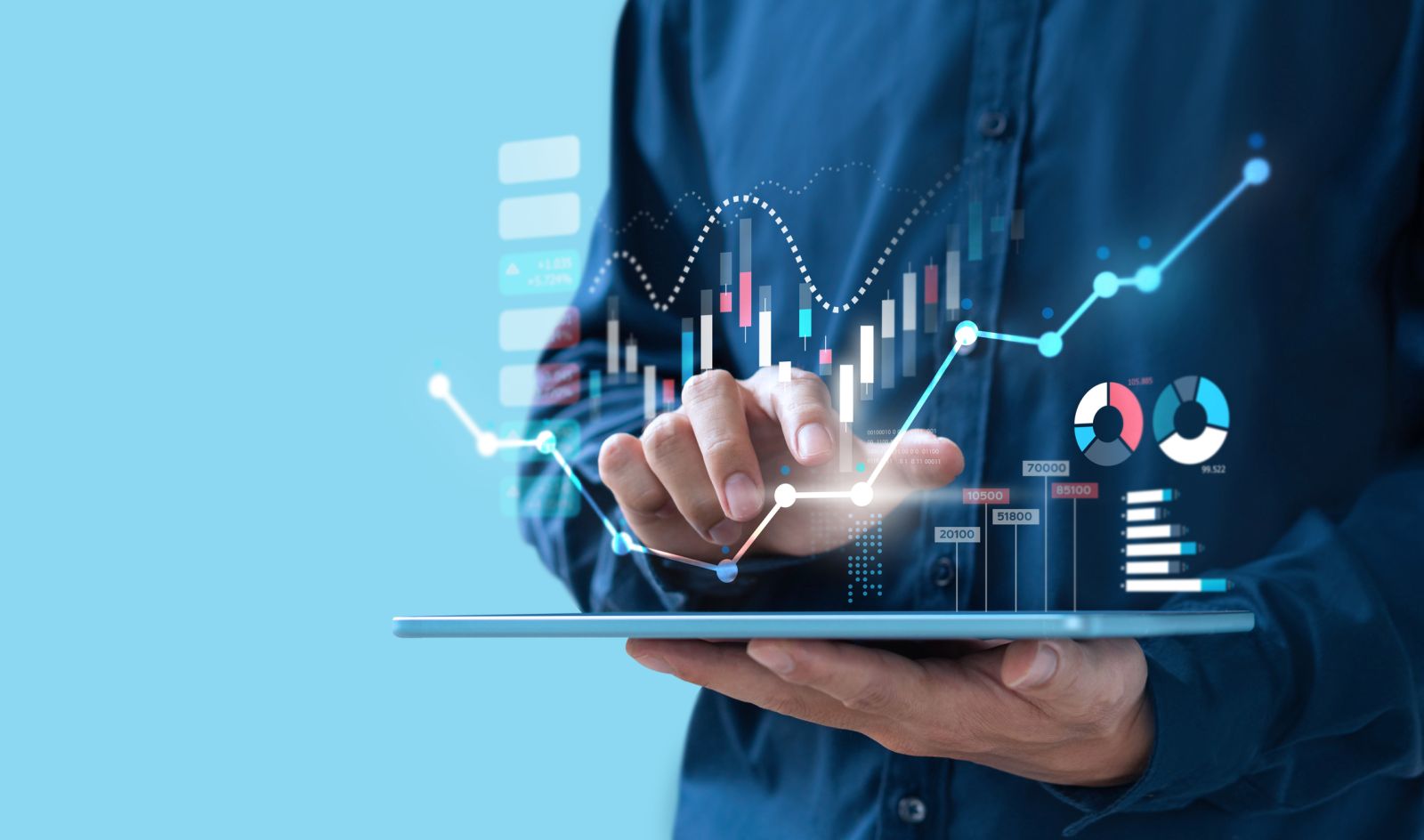
With a total market capitalization of $109T as of FY23, the stock market remains one of the world’s most prominent financial markets.
Stocks have already demonstrated their resilience and durability after a series of crises. The Great Depression, the dot-com Bubble, the Global Financial Crisis, and the Pandemic Recession were some notable examples. Even better, they have always surpassed pre-crisis peaks. With their high returns over the years, stocks have proved to be valuable and viable investments.
Meanwhile, stock trading has become more convenient in recent years. It has evolved to address traders' increasing needs and demands worldwide, from manual to electronic to online. This has allowed it to bridge the gap in the financial market and maintain uninterrupted money flows domestically and internationally.
As such, online stock trading platforms are more ubiquitous these days. Unsurprisingly, the global online trading market alone is expected to reach $13.3B by FY26.
Moreover, we are seeing more advanced changes in the market as blockchain technology and other fintech innovations take over. Along with these is the evolution of regulatory frameworks to improve security, transparency, fairness, and competitiveness among traders and online platforms.
So, as trading becomes more accessible, regulatory bodies aim to enhance stakeholders’ protection. All these aspects may intensify as the market heats up amid the global economic recovery.
In this article, we will analyze the online stock trading transformation and how traders and trading platforms can capitalize on these critical milestones.
The Evolution of Online Stock Trading
The advent of online stock trading can be traced back to the latter part of the 20th century, as technological advancements revamped the investment trading landscape. Initially, it was marked by the emergence of electronic trading systems that took over the original floor trading.
As technologies evolved, online trading became more accessible on mobile devices. This paved the way for the boom of online trading apps and websites. With online platforms proliferating, online trading adoption among millions of retail investors increased.
As such, stock trading participation rose substantially worldwide. In the US, for instance, the percentage of stock traders grew from 15% in 2019 to 25% in 2021. While we can point to the drastic price drop in 2020 and increased financial awareness, convenience, and accessibility were also pivotal.
Early Electronic Trading Systems
NASDAQ was integral in transitioning stock trading from traditional floor trading to electronic trading. In 1971, the Financial Industry Regulatory Authority (FINRA), formerly the National Association of Securities Dealers (NASD), launched it as the first electronic stock exchange.
This breakthrough enabled more efficient and faster trade positioning or execution times, market insights gathering, and mistake rate reduction. Price and stock market changes were updated so investors could make well-informed decisions. Also, traders could place buy and sell orders at any time they wished, revolutionizing stock market transactions.
As years passed, electronic stock trading became more prominent. But that didn’t stop it from evolving as computers became more efficient tools for trading.
From the ‘80s to the ‘90s, the world saw how trading shifted from manual phone-based orders to electronic or computer-based orders. This opened doors for newer and smaller brokers and trading platforms to penetrate the stock market. In turn, stock trading became accessible to individual and retail investors.
Imagine how order execution times sped up as trading transitioned. In floor trading, traders on stock market exchanges like the New York Stock Exchange (NYSE) stood on a physical trading floor to execute orders. They used hand signals to convey buy-and-sell orders to their fellow traders. From there, they exchanged stocks and money.
Tiring, isn’t it? It would take about a minute or two to complete the process, which was risky since prices could vary in a millisecond, especially during a volatile economic condition. While it could establish trust and rapport among traders and tend to be more liquid, it was less efficient and susceptible to price inaccuracies.
Meanwhile, electronic trading allowed traders to react to the market more quickly. Trade execution could take less than a minute or even a second to keep up with price changes. Moreover, it reduced trade execution latency, so market insights and investment decisions were more updated. It also lessened the risk of asymmetric information since everything was transparent and could be confirmed online.
Despite this, some traders still prefer floor trading today. As many traders say, a shouting person can sometimes be more helpful than a computer. Recent statistics show that about 500 to 1,000 people trade on the floor daily. Given this, the NYSE uses a hybrid model that fuses floor trading with electronic systems to optimize efficiency and transparency.
The Rise of Online Brokerages
The increased dominance of electronic trading has increased stock market accessibility. People can execute trades using computers, and other traders and businesses can trade online on behalf of others.
With that, online brokerage firms surfaced in the 1980s before peaking a decade later. Some notable companies include E*TRADE and Scottrade, which revolutionized trading through online transactions.
As such, traders were able to trade independently. This reduced the need for traditional brokers and lowered transaction costs, mainly commissions and fees. Since trading became cheaper, many people living on average incomes joined the market. People could trade online, compare brokerage fees and services, and choose the one that fits their needs.
Given all this, retail traders' participation rate surged in the late ‘90s. This was complemented by expansionary monetary policies in the US that lowered interest rates and encouraged many startups. This trend was evident in the technology sector as widespread internet adoption continued. Online retailers also benefited from it. As the dot-com boom started, companies like Amazon (AMZN) and eBay (EBAY) blossomed.
However, many companies that raised huge capital went public without a concrete business plan, a track record of earnings, and products or services. These companies quickly burned cash, leading to their insolvency and shutdown. In turn, the value of their stocks took a nosedive, which had a spillover effect on the whole stock market.
Mobile trading
Over the past decade, mobile devices have become a staple for personal and business use. However, as fintech development continued, mobile trading became the new face of online stock trading.
Today, mobile trading apps and platforms dominate, so trading is handy. This makes trading more inclusive, allowing more people across different income classes to join the market. In 2022, the global value of online trading reached $9.32B and is expected to climb to $10.61B this year.
Mobile trading is taking over, given its accessibility anytime and anywhere. Users can trade stocks and other financial instruments while commuting to work or doing household chores. With simplified interfaces, newbies can start trading even with limited backgrounds and learning curves.
More interestingly, even digital banking apps and e-wallets now have online stock trading features and services. Users can trade on the app by topping up their wallet with a minimum amount.
Additionally, these apps typically offer commission-free trading, which may increase the competition in the market and further lower trading costs. In turn, there may be an influx of capital inflows, so the increase in trading volume can cover the decrease in commissions. So, it’s no wonder mobile apps drive the rising online trading volume and frequency.
As of FY23, the stock trading app market is valued at $16.27B and may have a compound annual growth rate (CAGR) of over 20% to FY33. This may be driven by the increasing demand for stock trading apps from financial institutions as they expand their services. Another driving force is the integration of other services, such as audit, consulting, and risk management, with the apps.
Regulatory Changes and Their Impact
Amid the evolution of stock trading, policymakers and regulatory bodies must adapt to the changes to promote market competitiveness, fairness, and transparency. This measure protects traders and prevents security threats and potential collusion among platforms.
Also, regulatory changes will help increase the trading participation rate amid economic recovery. As of FY23, over 60% of American adults traded on the stock market. This remained stable since the dot-com boom, proving the market's resilience even during crises.
Early regulatory framework
The early regulatory landscape revolved around investor protection and fraud prevention. The Securities Act of 1933, enacted by the Securities and Exchange Commission (SEC), was its foundation. It had two primary objectives, one of which was to focus on market transparency and integrity.
It required the market to present timely financial and other material information about securities offered to the public. Also, it prohibited any forms of deceit that may lead to fraud.
The most common way requires publicly traded companies to disclose important financial information through securities registration. That is why companies must file financial reports, sales of properties and securities, M&As, and other filings that may affect their financial health. Over the years, the SEC oversaw floor trading and electronic trading activities until online brokerages emerged.
In the 1990s, companies like E*TRADE and Ameritrade captured the attention of many traders. But as industry trailblazers, they experienced system glitches as technologies had yet to be developed.
For instance, online investors were upset when they placed an order at a quoted price only to discover that the price had changed when the trade orders were executed. This made them subject to regulatory scrutiny to protect online traders.
Despite this, online trading became more prevalent as more online brokerages entered the market. In 1999, 25% of trade orders took place online. Aside from large-scale brokerage firms, independent broker-dealers, online platforms, and discount brokers emerged. Although this affected commissions, the increase in volume offset the impact.
Modern regulatory framework
Over the past decade, online trading regulations have intensified following the Global Financial Crisis. New rules were introduced to cope with new trading practices. For instance, the Dodd-Frank Act was approved to respond to lax regulations that drove the GFC. Banking and lending companies were targeted due to the prevalent unethical practices in the previous years. Some examples are subprime and predatory lending, speculative mania, and overlending/overselling of properties.
While the law was heavily criticized for making US stocks less competitive than their foreign counterparts, it paved the way for more laws to promote consumer and investor protection.
In the following years, newer laws rolled back some of its provisions. For instance, the US Congress approved the Economic Growth, Regulatory Relief, and Consumer Protection in 2016. This aimed to ease restrictions on small and regional banks. During the Biden Administration, it targeted rules against subprime and predatory lending as the economy remained shaky.
In the years after the pandemic, we saw a huge influx of retail brokerage accounts in the stock market. Stock price drops, increased financial awareness, and lower interest rates helped reduce trading entry barriers. Approximately 10M new accounts were opened, and 66% were new investors. More interestingly, many of these new investors were younger and from lower income brackets.
Additionally, online stock trading platforms have transformed investors’ account interface. They launched new design features, commonly referred to as gamification. These included animations, games, social networking tools, badges, and perks.
Given all these recent changes, regulators are concerned about the risks associated with gamification. FINRA announced its plan to seek public comment on gamification practices to set new rules.
Meanwhile, SEC Chairman Gensler that these new models may lead to new rules as they encourage traders to trade more. They may promulgate new rules or amend the existing ones to address these new trends in communication and technology.
Blockchain as the Future of Online Trading
Blockchain technology is integral in decentralizing the cryptocurrency market. As a public ledger, it records and stores all crypto transactions while hiding the identity of all users. Now, its advanced features are penetrating banking and finance. Data storage and money transfer security are some of its potential uses.
Additionally, blockchain will allow banking transaction automation through smart contracts. It is beneficial for lending activities as it may expedite loan origination processes. With smart contracts, loan agreements and collateral will be automatically investigated and executed. Hence, it will act as a third party, improving efficiency and lowering expenses.
JP Morgan is an example. Its blockchain business unit, Onyx, and fintech company, Broadridge, work for its JPM Coin. This will serve as the settlement mechanism for the latter’s Distributed Ledger Repo (DLR) platform. It will also complement DLR’s repo capabilities with intra-day repo and the current overnight and term repo capabilities in the market. It is expected to be available this month.
In the same way, the stock market can capitalize on blockchain technology to improve its security and reduce hacking risks and malicious activities. A stock exchange or an online stock trading platform may utilize blockchain technology to record all stock transactions, including buy and sell orders and dividend payouts, while keeping users’ identities hidden from the public.
Furthermore, blockchain technology can remove a single point of failure using its decentralized facilities. Online trading platforms may benefit from it by streamlining stock market activity processes and lowering costs and trade execution times.
In turn, online platforms may enhance efficiency to lower operating costs and realize more earnings. On the other hand, traders may benefit from lower commissions and trading fees and entice more individuals.
Key Takeaways
Online trading has undergone many transformations, which have enhanced market efficiency and trading inclusion. It has also faced challenges and scrutiny amid various changes and crises. The metamorphosis may be far from over as more advanced technologies emerge. There may be more opportunities, but new rules must be made to ensure competitiveness and fairness.
This article contains sponsored content. Barchart has not reviewed, approved, or endorsed the content, and may receive compensation for placement of the content on this site. For more information please view the Barchart Disclosure Policy here.





